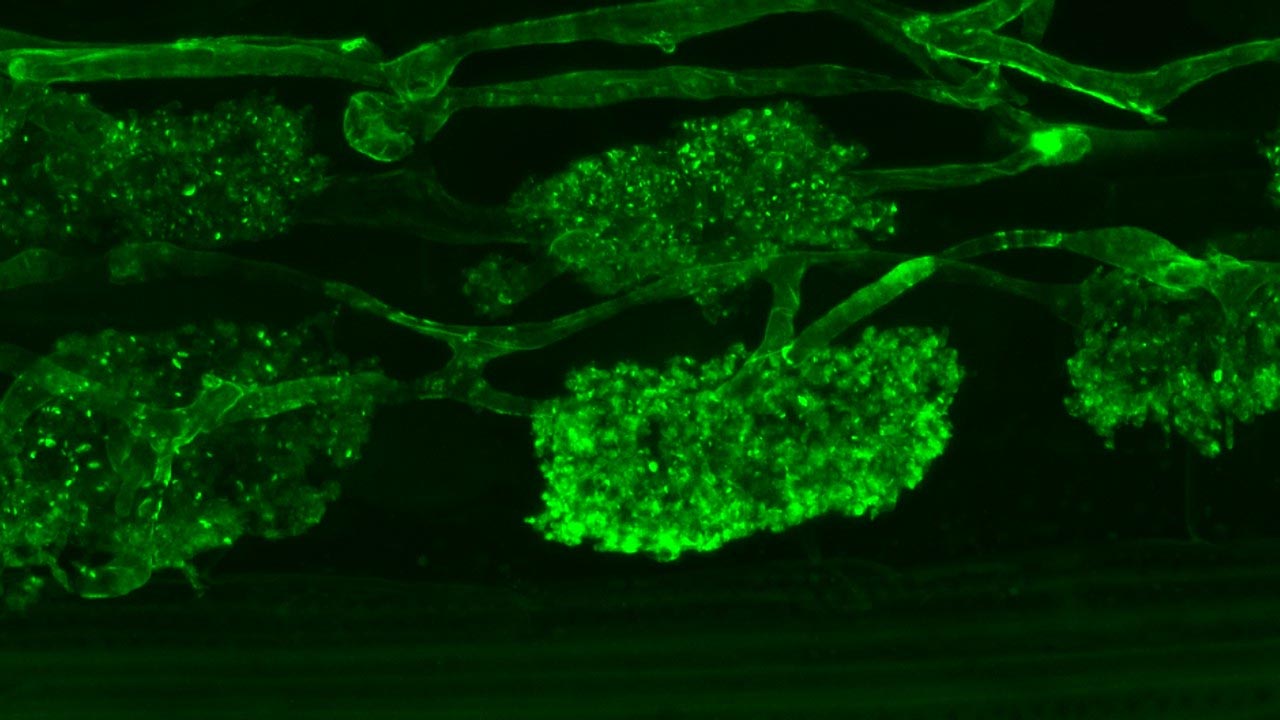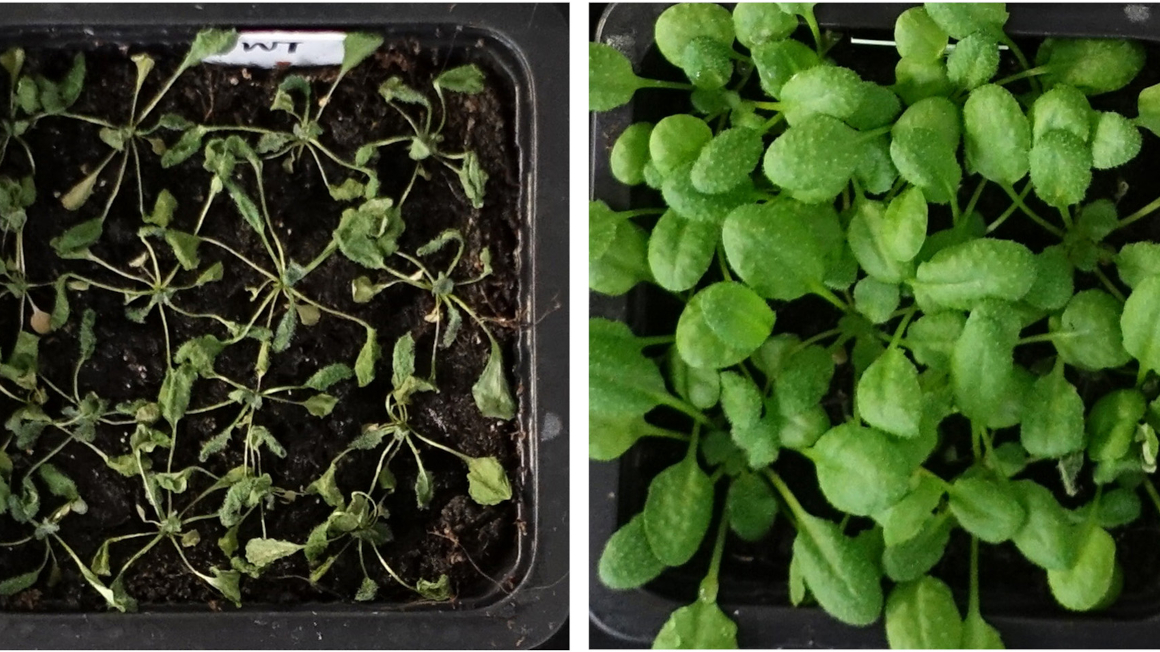How rice plants regulate their root fungal network
Munich plant researchers have discovered a key protein that controls phosphate uptake through symbiosis with fungi.

Sun, water, air and nutrients are the basic requirements for plant growth. Since it is not always easy to obtain sufficient nutrients from the soil, more than 80 % of all plants have formed a symbiosis with certain fungi, a so-called arbuscular mycorrhiza. How plants initiate this symbiosis and regulate its activity has now been elucidated by a research team led by the Technical University of Munich and reported in the journal „Nature Communications“.
Phosphate in exchange for carbon
In arbuscular mycorrhiza, the fungus grows into the root bark cells of the plant and also forms a large network of so-called hyphae in the soil. Through these hyphae, the fungus takes up nutrients, including phosphate, which is important for plants, and directs them directly into the plant. In return, the plant shares the carbon obtained via photosynthesis with its symbiont.
However, researchers noticed decades ago that the plant clearly sets the tone in this symbiosis: If the plant is not deficient in phosphate, it shuts down symbiotic activity - presumably to save its own carbon. However, if the phosphate deficiency increases, the plant increases the symbiotic activity. Until now, however, it was unclear how this regulation is controlled. Now the research team has been able to show that a protein called PHR is key.
PHR regulates the activity of symbiosis
PHR is a so-called transcription factor and influences DNA in terms of whether and in what quantity a certain protein is produced in the cell." We sought to find out how arbuscular mycorrhiza form and hypothesized that PHR could be responsible for this. "We tried to find out how the formation of arbuscular mycorrhiza is regulated as a function of phosphate availability and hypothesized that PHR could be responsible for this," explains Caroline Gutjahr, Professor of Plant Genetics at TU Munich. For this, the experts modified rice plants and the model plant Lotus japonicus so that they could not form PHR - and indeed, the plants were consequently unable to respond to changes in phosphate availability by adjusting their mycorrhizal activity.
However, silencing the gene for the PHR protein had even more consequences. Other proteins involved in the function of the mycorrhiza were now also no longer active, including a hormone that is essentially responsible for initiating the symbiosis with the fungus in the first place.
Better nutrient supply as a breeding goal
"Based on our new knowledge, the phosphate sensitivity of plants could be changed through breeding or genome editing," Gutjahr describes the significance of the discovery. Since the symbiosis still supports the plant with other nutrients, it would be conceivable to fundamentally enhance the activity of the mycorrhiza, the geneticist explains: "By 'tuning' PHR, for example, one could lower the plant's phosphate sensitivity and promote the formation of the symbiosis at higher phosphate concentrations in the soil, thus exploiting its other advantages for agricultural production."
bl


